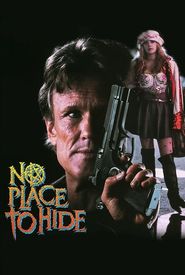Bill Shaw, a dynamic and versatile American martial artist, stuntman, and actor, has been an integral part of the film industry since the mid-1970s. His profound enthusiasm for the world of filmmaking has driven him to acquire an extensive knowledge of the production business, encompassing an in-depth examination of the Hollywood landscape and a meticulous study of the intricacies of the industry.
Bill, a highly accomplished martial artist, embarked on a thrilling endeavor to elevate his expertise by orchestrating and executing his own elaborate stunts. With an unwavering dedication to his craft, he conceptualized and brought to life a captivating fight sequence, enlisting the participation of his talented students from his martial arts academy in Casper, Wyoming. In a bold display of creative initiative, Bill even engaged the services of a skilled cinematographer to impart valuable insights on the art of editing, thereby further refining his overall production skills.
Bill's fascination with the art of acting prompted him to enroll in acting classes at a nearby college, where he diligently devoted himself to refining his acting abilities, thereby cultivating a profound understanding of the craft.
As the 1970s dawned, Bill had already established himself as a respected and accomplished martial artist, instructing students in the intricacies of Han Foo Wa, a sophisticated and highly advanced form of combined fighting arts.
Han Foo Wa's comprehensive martial arts system seamlessly integrated a diverse array of combat disciplines, including the fluid, adaptive style of Jeet Kune Do, the grappling and submission techniques of Ju-Jitsu, the concise, efficient movements of Wing Chun, the throwing and grappling strategies of Judo, the striking and kicking methods of Kenpo, the powerful punching and kicking techniques of Karate, the hand-to-hand combat principles of Boxing, the takedowns and grappling tactics of Wrestling, the knife and stick fighting methods of Kali and Escrima, the kicking and punching styles of Kung-Fu, the stand-up striking and clinching techniques of Muay Thai, the eclectic blend of striking and grappling from Kajukenbo, the kicking and punching combinations of Tae Kwon Do, the close-range striking and clinching methods of Pentjak Silat, the stick and rope fighting tactics of Silambam, the military and police tactics for self-defense, and the unstructured, improvisational nature of street fighting.
As the decade of the 1980s dawned, Bill's remarkable proficiency and instructive prowess had garnered widespread acclaim, precipitating numerous hall of fame nominations and inductions that served as testament to his exceptional abilities.
Editorial remarks published in Karate Illustrated magazine lauded his teachings, astutely observing that "...a martial artist's most effective offense - as well as defense!" This resounding endorsement effectively solidified Bill's reputation as one of the preeminent martial artists in the United States, a distinction that further reinforced his status as a master of his craft.
Bill's remarkable journey to this pinnacle of recognition was a testament to his unwavering dedication, unrelenting passion, and unshakeable commitment to the art of martial arts.
By the 1990s, Bill had successfully merged his expertise in filmmaking and martial arts, laying the foundation for a prosperous career in the entertainment industry. His initial foray into the world of movies was marked by a dual role, as he began working as a stunt double and fight choreographer, bringing his exceptional skills to the forefront. His debut on camera took place in the 1992 film No Place to Hide, where he shared the screen with esteemed actors Drew Barrymore and Martin Landau.
Following a temporary departure from the film industry in the 2000s to provide support to his mother's entrepreneurial endeavors, Bill re-entered the world of movie-making in 2015, rekindling his enthusiasm for the art of stunt work. Concurrently, he resumed competing at the prestigious US Open World Martial Arts Championships, where he was subsequently recruited by the National Team "Executive Edge", a highly select group consisting of three exceptional Black Belts, all of whom were over the age of 60. Bill continues to share his expertise by instructing his innovative HiT, Hi-Impact Training program.




















